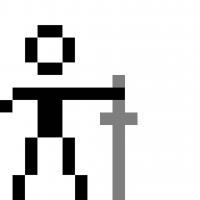Note: I wrote a bit too much perhaps; skim to the linked and
bolded parts if you just want the highlights.
Case: Get anything that is cheap and seems like it should work; fancy cases are only useful if you need heavy-duty cooling, an extra quiet system, or you intend to tinker with it on a regular basis.
Brick-and-mortar may be cheaper due to high shipping costs.
Power supply: You don't need a high wattage one, but
get a good brand. Many are not reliable and/or cause instability by supplying noisy power at incorrect voltages. Corsair, Silverstone, PC Power and Cooling, Thermaltake, and Enermax all make reliable units. Get a ~400W unit with the right connectors for your system.
Motherboard: Choose carefully and don't be too cheap as
a good motherboard is key to system stability.
Check customer reviews (
Newegg.com has lots)
and the manufacturer's website to make sure you understand what problems and compatibility issues come with your board. For cheap AMD boards,
I recommend a Gigabyte or Asus board based on the AMD 770 or 780 northbridge and the SB700 southbridge. Board size (full ATX vs micro ATX) effects primarily how many expansion slots are on the board; a full ATX board will usually have 7, while a micro ATX board will have 4. However what matters is how many a board has of each kind; count how many slots you need of each kind (PCI, PCI-E X1, PCI-E X4/8/16). Board size also determines what kind of case you need; some cases only accept the smaller micro ATX size.
CPU: An Athlon 64 X2 5000+ should work well; I believe Athlon X2 performance scales pretty much linearly with clock speed (GHz), so don't bother paying 30% more for a 10% clock speed bump or whatever. Athlon 64 chips are slower than their Intel counterparts per GHz for gaming, however for the same money you can get an Athlon chip that is clocked significantly higher, so on the low end it comes down in AMD's favor at the moment. As a rough rule of thumb, a 65nm Intel Core 2 based chip is equal to an AMD Athlon X2 at 1.2x of its clock rate: Intel Core 2 @ 2.2GHz = Athlon X2 @ 2.6GHz. For higher end chips, AMD just doesn't make anything as fast as Intel's pricier stuff at the moment (for gaming). AMD is coming out with 45nm 4-core chips soon which are supposed to be more competitive, so if you need to upgrade your new AMD system later you should have a viable option.
GPU: For ATI
an HD4670, HD4830, or HD4850 would be good. For Nvidia
an 8800GS, 9600GSO, 9600GT, or 8800GT=9800GT would be good. Order in both lists is cheapest to most powerful. The HD4670s have the special advantage that they do not require extra power beyond what the motherboard can supply them through the slot, which may let you skimp on the power supply a bit more. As far as ATI vs NVIDIA goes right now, ATI is a bit ahead performance wise. NVIDIA currently has better drivers, however the ATI windows drivers are good these days and ATI has been taking aggressive measures to improve their Linux driver quality for the future.
Hard drive: Your pick looks good. There are no gotcha's that I am aware of for hard drives smaller than 750GB currently. Just
get one with the newer SATA, rather than PATA/IDE interface.Optical drives: Spend the extra $5 to get a Retail, rather than OEM, copy. Retail includes a "free" copy of Nero and Power DVD generally. Without them (or equivalents) you will have a hard time burning discs and watching movies on your drive. Stand alone copies of the software cost a lot more. Also check the customer reviews on somewhere like
Newegg.com to make sure the model you get handles slightly damaged or dirty disks respectably; some newer drives are very finicky about this.
RAM: Make sure to get the right kind. Most modern motherboards (including the AMD 770/780 boards I was suggesting) take DDR2 RAM. DDR2 RAM can have different required voltages. For DDR2,
get 1.8V RAM for simplicity; it will work in any DDR2 motherboard and generates the least heat as well. It doesn't really cost extra unless you are trying to get very fast or dense sticks; just check the specs. Also be aware that a significant portion of RAM shipped is defective;
be sure to run the memory test on your Ubuntu CD for at least one pass before you do anything else with the system. Kingston makes reliable, cheap RAM.
This kit should be ideal for almost any DDR2-based system.
Cooling: The sort of parts we have been talking about do not require much extra cooling beyond the stock heat sinks and fans. Get a case with at least a fan or two, and try to avoid covering them with cables completely during installation. Also make sure your power supply has a fan (which will also help blow hot air out of the case). You should not have any problems unless you plan to overclock.









